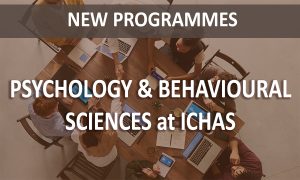
Helping College Students Cross the Finish Line
Behavioral interventions help students at risk of falling short of a degree.
Earning a degree can require you to learn nearly as much about college as you do in college. To handle the often steep learning curve, colleges nationwide front-load supports for incoming students, with everything from online tutorials to yearlong communal experiences. When I arrived at college, I was whisked away to the First-Year Experience program before I could so much as hang my Army of Darkness poster on the wall. Welcome weekend was a whirlwind of icebreakers, campus tours, and warnings about the dangers of alcohol. Throughout the semester, I attended weekly meetings led by a senior who taught us the ins-and-outs of college life. And I checked in regularly with my appointed faculty adviser, who was also my professor for a first-year seminar. The web of proactive support was genuinely impressive and meant a lot to me as I transitioned to college.
But as the second semester led into sophomore year, that web quickly dissolved and I was left to figure things out on my own. As typical on most campuses, the near-peer mentors, mandatory advising, and learning communities were peeled away, placing the onus on me to find help when I needed it. Although this strategy could pave the road to self-advocacy—not to mention that it appears to make good fiscal sense—it is failing many of our students. More than 40 percent of students who leave college without a degree do so after their second year. In fact, one in three students who drop out has earned over 75 percent of the credits they need to graduate (link is external). Moreover, tens of thousands of students need fewer than 12 credits to graduate (link is external), and thousands more have earned enough credits to claim a degree but don’t know it. These surprising figures call for increased, proactive support focused specifically on the challenges faced by “near completers”—such as scheduling difficulties, financial struggles, career uncertainty, and life upheavals—as they approach the finish line of college.
An intervention that leverages behavioral science and text messaging to reach out to near completers has done just that. A new working paper by Zack Mabel (Harvard) and Drs. Ben Castleman (University of Virginia) and Eric Bettinger (Stanford) describes a yearlong pilot to “nudge” near completers to persist in school and finish their degrees (link is external). Students at nine community colleges and four-year universities across the U.S. received personalized and interactive nudges throughout the year via SMS to help them over hurdles in school. These texts focused on financial challenges, such as exhausting one’s financial aid or facing food and housing insecurity, as well as logistical concerns, like registering on time to get the specific classes needed to graduate. These nudges also addressed students’ non-cognitive challenges, like de-stigmatizing help-seeking or replacing a fixed with a growth mindset.
The results of this pilot study demonstrate that nudging can help near completers cross the finish line. After excluding two schools with implementation issues, the researchers found that nudging significantly increased fall-to-spring persistence from 83 to 85 percent. They also observed a small but significant increase in both credits attempted and credits earned during the spring term. Perhaps most exciting, graduation rates jumped from 16 to 22 percent among students in the top third in terms of risk to withdraw (as determined by an algorithm derived from institutions’ historical data).
So how exactly does nudging influence near completers? Two insights suggest that nudges help students connect with the support they need to overcome significant obstacles to graduation. One community college in the project collected minute-by-minute data on students’ use of campus resources via their student IDs. Near completers who were nudged leveraged campus resources for over 50 percent longer than students in the control group, especially on-campus tutoring. At a second institution, nudging revealed that some 15 percent of respondents were unsure about if and when they could graduate. Reasons for confusion spanned from having inaccurate information from a course audit tool to being in limbo regarding transfer credits from previous institutions. Proactive outreach by this university was successful in getting many of these students to walk this past year. Although the study was underpowered to detect mediation at a single intervention site, these findings indicate that even students who are almost done with their degree still could use a nudge to get help when problems arise.
The momentum that students gain as they start college can be interrupted for any number of reasons, and having supports designed for multiple stages of students’ academic careers is essential for increasing graduation rates. As we all strive to see more students who matriculate finish with a degree, we need to remember that it’s not enough to just get them started on the right path. With that goal in mind, what supports are designed for students approaching graduation at your institution? Or what kinds of programs would you like to see implemented? Let’s continue the conversation about how near completers can be better supported in the comments section.
References
Bowen, W. G., Chingos, M. M., & McPherson, M. S. (2009). Crossing the finish line: Completing college at America’s public universities. Princeton, NJ: Princeton University Press.
Behavioral interventions help students at risk of falling short of a degree.
Earning a degree can require you to learn nearly as much about college as you do in college. To handle the often steep learning curve, colleges nationwide front-load supports for incoming students, with everything from online tutorials to yearlong communal experiences. When I arrived at college, I was whisked away to the First-Year Experience program before I could so much as hang my Army of Darkness poster on the wall. Welcome weekend was a whirlwind of icebreakers, campus tours, and warnings about the dangers of alcohol. Throughout the semester, I attended weekly meetings led by a senior who taught us the ins-and-outs of college life. And I checked in regularly with my appointed faculty adviser, who was also my professor for a first-year seminar. The web of proactive support was genuinely impressive and meant a lot to me as I transitioned to college.
But as the second semester led into sophomore year, that web quickly dissolved and I was left to figure things out on my own. As typical on most campuses, the near-peer mentors, mandatory advising, and learning communities were peeled away, placing the onus on me to find help when I needed it. Although this strategy could pave the road to self-advocacy—not to mention that it appears to make good fiscal sense—it is failing many of our students. More than 40 percent of students who leave college without a degree do so after their second year. In fact, one in three students who drop out has earned over 75 percent of the credits they need to graduate (link is external). Moreover, tens of thousands of students need fewer than 12 credits to graduate (link is external), and thousands more have earned enough credits to claim a degree but don’t know it. These surprising figures call for increased, proactive support focused specifically on the challenges faced by “near completers”—such as scheduling difficulties, financial struggles, career uncertainty, and life upheavals—as they approach the finish line of college.
An intervention that leverages behavioral science and text messaging to reach out to near completers has done just that. A new working paper by Zack Mabel (Harvard) and Drs. Ben Castleman (University of Virginia) and Eric Bettinger (Stanford) describes a yearlong pilot to “nudge” near completers to persist in school and finish their degrees (link is external). Students at nine community colleges and four-year universities across the U.S. received personalized and interactive nudges throughout the year via SMS to help them over hurdles in school. These texts focused on financial challenges, such as exhausting one’s financial aid or facing food and housing insecurity, as well as logistical concerns, like registering on time to get the specific classes needed to graduate. These nudges also addressed students’ non-cognitive challenges, like de-stigmatizing help-seeking or replacing a fixed with a growth mindset.
The results of this pilot study demonstrate that nudging can help near completers cross the finish line. After excluding two schools with implementation issues, the researchers found that nudging significantly increased fall-to-spring persistence from 83 to 85 percent. They also observed a small but significant increase in both credits attempted and credits earned during the spring term. Perhaps most exciting, graduation rates jumped from 16 to 22 percent among students in the top third in terms of risk to withdraw (as determined by an algorithm derived from institutions’ historical data).
So how exactly does nudging influence near completers? Two insights suggest that nudges help students connect with the support they need to overcome significant obstacles to graduation. One community college in the project collected minute-by-minute data on students’ use of campus resources via their student IDs. Near completers who were nudged leveraged campus resources for over 50 percent longer than students in the control group, especially on-campus tutoring. At a second institution, nudging revealed that some 15 percent of respondents were unsure about if and when they could graduate. Reasons for confusion spanned from having inaccurate information from a course audit tool to being in limbo regarding transfer credits from previous institutions. Proactive outreach by this university was successful in getting many of these students to walk this past year. Although the study was underpowered to detect mediation at a single intervention site, these findings indicate that even students who are almost done with their degree still could use a nudge to get help when problems arise.
The momentum that students gain as they start college can be interrupted for any number of reasons, and having supports designed for multiple stages of students’ academic careers is essential for increasing graduation rates. As we all strive to see more students who matriculate finish with a degree, we need to remember that it’s not enough to just get them started on the right path. With that goal in mind, what supports are designed for students approaching graduation at your institution? Or what kinds of programs would you like to see implemented? Let’s continue the conversation about how near completers can be better supported in the comments section.
References
Bowen, W. G., Chingos, M. M., & McPherson, M. S. (2009). Crossing the finish line: Completing college at America’s public universities. Princeton, NJ: Princeton University Press.
Behavioral interventions help students at risk of falling short of a degree.
Earning a degree can require you to learn nearly as much about college as you do in college. To handle the often steep learning curve, colleges nationwide front-load supports for incoming students, with everything from online tutorials to yearlong communal experiences. When I arrived at college, I was whisked away to the First-Year Experience program before I could so much as hang my Army of Darkness poster on the wall. Welcome weekend was a whirlwind of icebreakers, campus tours, and warnings about the dangers of alcohol. Throughout the semester, I attended weekly meetings led by a senior who taught us the ins-and-outs of college life. And I checked in regularly with my appointed faculty adviser, who was also my professor for a first-year seminar. The web of proactive support was genuinely impressive and meant a lot to me as I transitioned to college.
But as the second semester led into sophomore year, that web quickly dissolved and I was left to figure things out on my own. As typical on most campuses, the near-peer mentors, mandatory advising, and learning communities were peeled away, placing the onus on me to find help when I needed it. Although this strategy could pave the road to self-advocacy—not to mention that it appears to make good fiscal sense—it is failing many of our students. More than 40 percent of students who leave college without a degree do so after their second year. In fact, one in three students who drop out has earned over 75 percent of the credits they need to graduate (link is external). Moreover, tens of thousands of students need fewer than 12 credits to graduate (link is external), and thousands more have earned enough credits to claim a degree but don’t know it. These surprising figures call for increased, proactive support focused specifically on the challenges faced by “near completers”—such as scheduling difficulties, financial struggles, career uncertainty, and life upheavals—as they approach the finish line of college.
An intervention that leverages behavioral science and text messaging to reach out to near completers has done just that. A new working paper by Zack Mabel (Harvard) and Drs. Ben Castleman (University of Virginia) and Eric Bettinger (Stanford) describes a yearlong pilot to “nudge” near completers to persist in school and finish their degrees (link is external). Students at nine community colleges and four-year universities across the U.S. received personalized and interactive nudges throughout the year via SMS to help them over hurdles in school. These texts focused on financial challenges, such as exhausting one’s financial aid or facing food and housing insecurity, as well as logistical concerns, like registering on time to get the specific classes needed to graduate. These nudges also addressed students’ non-cognitive challenges, like de-stigmatizing help-seeking or replacing a fixed with a growth mindset.
The results of this pilot study demonstrate that nudging can help near completers cross the finish line. After excluding two schools with implementation issues, the researchers found that nudging significantly increased fall-to-spring persistence from 83 to 85 percent. They also observed a small but significant increase in both credits attempted and credits earned during the spring term. Perhaps most exciting, graduation rates jumped from 16 to 22 percent among students in the top third in terms of risk to withdraw (as determined by an algorithm derived from institutions’ historical data).
So how exactly does nudging influence near completers? Two insights suggest that nudges help students connect with the support they need to overcome significant obstacles to graduation. One community college in the project collected minute-by-minute data on students’ use of campus resources via their student IDs. Near completers who were nudged leveraged campus resources for over 50 percent longer than students in the control group, especially on-campus tutoring. At a second institution, nudging revealed that some 15 percent of respondents were unsure about if and when they could graduate. Reasons for confusion spanned from having inaccurate information from a course audit tool to being in limbo regarding transfer credits from previous institutions. Proactive outreach by this university was successful in getting many of these students to walk this past year. Although the study was underpowered to detect mediation at a single intervention site, these findings indicate that even students who are almost done with their degree still could use a nudge to get help when problems arise.
The momentum that students gain as they start college can be interrupted for any number of reasons, and having supports designed for multiple stages of students’ academic careers is essential for increasing graduation rates. As we all strive to see more students who matriculate finish with a degree, we need to remember that it’s not enough to just get them started on the right path. With that goal in mind, what supports are designed for students approaching graduation at your institution? Or what kinds of programs would you like to see implemented? Let’s continue the conversation about how near completers can be better supported in the comments section.
References
Bowen, W. G., Chingos, M. M., & McPherson, M. S. (2009). Crossing the finish line: Completing college at America’s public universities. Princeton, NJ: Princeton University Press.
Behavioral interventions help students at risk of falling short of a degree.
Earning a degree can require you to learn nearly as much about college as you do in college. To handle the often steep learning curve, colleges nationwide front-load supports for incoming students, with everything from online tutorials to yearlong communal experiences. When I arrived at college, I was whisked away to the First-Year Experience program before I could so much as hang my Army of Darkness poster on the wall. Welcome weekend was a whirlwind of icebreakers, campus tours, and warnings about the dangers of alcohol. Throughout the semester, I attended weekly meetings led by a senior who taught us the ins-and-outs of college life. And I checked in regularly with my appointed faculty adviser, who was also my professor for a first-year seminar. The web of proactive support was genuinely impressive and meant a lot to me as I transitioned to college.
But as the second semester led into sophomore year, that web quickly dissolved and I was left to figure things out on my own. As typical on most campuses, the near-peer mentors, mandatory advising, and learning communities were peeled away, placing the onus on me to find help when I needed it. Although this strategy could pave the road to self-advocacy—not to mention that it appears to make good fiscal sense—it is failing many of our students. More than 40 percent of students who leave college without a degree do so after their second year. In fact, one in three students who drop out has earned over 75 percent of the credits they need to graduate (link is external). Moreover, tens of thousands of students need fewer than 12 credits to graduate (link is external), and thousands more have earned enough credits to claim a degree but don’t know it. These surprising figures call for increased, proactive support focused specifically on the challenges faced by “near completers”—such as scheduling difficulties, financial struggles, career uncertainty, and life upheavals—as they approach the finish line of college.
An intervention that leverages behavioral science and text messaging to reach out to near completers has done just that. A new working paper by Zack Mabel (Harvard) and Drs. Ben Castleman (University of Virginia) and Eric Bettinger (Stanford) describes a yearlong pilot to “nudge” near completers to persist in school and finish their degrees (link is external). Students at nine community colleges and four-year universities across the U.S. received personalized and interactive nudges throughout the year via SMS to help them over hurdles in school. These texts focused on financial challenges, such as exhausting one’s financial aid or facing food and housing insecurity, as well as logistical concerns, like registering on time to get the specific classes needed to graduate. These nudges also addressed students’ non-cognitive challenges, like de-stigmatizing help-seeking or replacing a fixed with a growth mindset.
The results of this pilot study demonstrate that nudging can help near completers cross the finish line. After excluding two schools with implementation issues, the researchers found that nudging significantly increased fall-to-spring persistence from 83 to 85 percent. They also observed a small but significant increase in both credits attempted and credits earned during the spring term. Perhaps most exciting, graduation rates jumped from 16 to 22 percent among students in the top third in terms of risk to withdraw (as determined by an algorithm derived from institutions’ historical data).
So how exactly does nudging influence near completers? Two insights suggest that nudges help students connect with the support they need to overcome significant obstacles to graduation. One community college in the project collected minute-by-minute data on students’ use of campus resources via their student IDs. Near completers who were nudged leveraged campus resources for over 50 percent longer than students in the control group, especially on-campus tutoring. At a second institution, nudging revealed that some 15 percent of respondents were unsure about if and when they could graduate. Reasons for confusion spanned from having inaccurate information from a course audit tool to being in limbo regarding transfer credits from previous institutions. Proactive outreach by this university was successful in getting many of these students to walk this past year. Although the study was underpowered to detect mediation at a single intervention site, these findings indicate that even students who are almost done with their degree still could use a nudge to get help when problems arise.
The momentum that students gain as they start college can be interrupted for any number of reasons, and having supports designed for multiple stages of students’ academic careers is essential for increasing graduation rates. As we all strive to see more students who matriculate finish with a degree, we need to remember that it’s not enough to just get them started on the right path. With that goal in mind, what supports are designed for students approaching graduation at your institution? Or what kinds of programs would you like to see implemented? Let’s continue the conversation about how near completers can be better supported in the comments section.
References
Bowen, W. G., Chingos, M. M., & McPherson, M. S. (2009). Crossing the finish line: Completing college at America’s public universities. Princeton, NJ: Princeton University Press.























